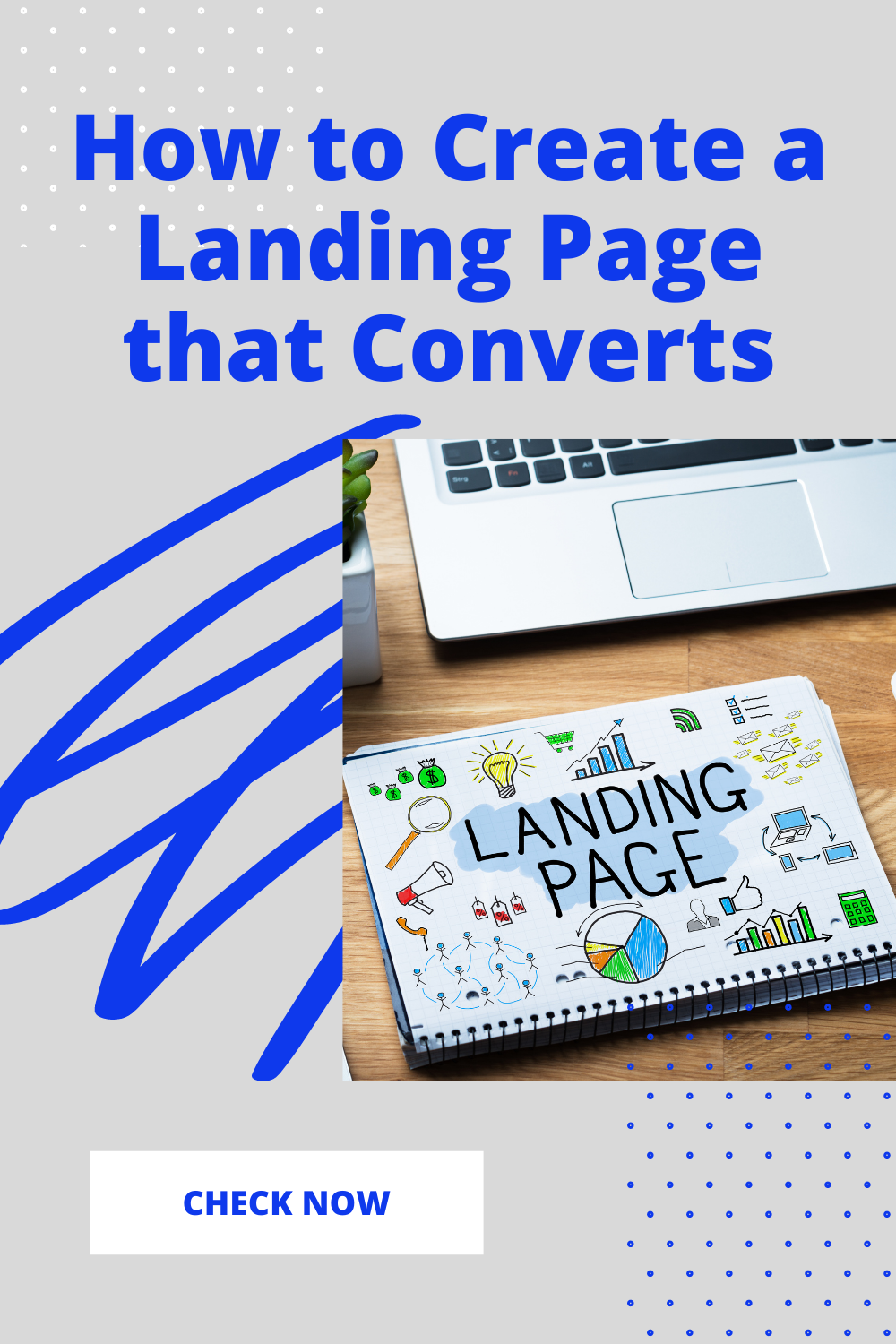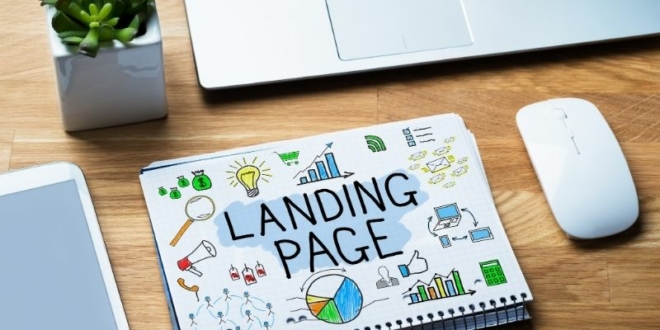A landing page is the foundation of great inbound marketing strategies. Landing pages serve as the location of your prospect “land” on your website. If you are trying to generate new leads or sell products online, landing pages are the place to that happen. And in a world where the average attention span online is about eight seconds, our landing pages must be optimized for instant conversion.
With such a short time to make your first impression, you need to ensure every piece of your landing page is well-planned and working correctly. In addition to that, many repeat visitors will come across your landing page. Optimizing your landing page will ensure these folks continuously see the information they expect, helping them become your brand advocates!
What Is A Landing Page?
Even in an intermediate guide, it is best to start with the basics. Let’s begin with a quick review of some core concepts in landing page optimization. A landing page is a page that allows you to capture a visitor’s information through a lead form. It is where your visitor “land” after clicking on a call to action button. This is the crux of your inbound marketing strategy. It is the point on your conversion path where you collect the information that generates a lead.
As a rule of thumb, a landing page usually includes a compelling header, exciting copy, minimal navigation, and an optimized form. In addition to good design, a good landing page employs an excellent strategy. The best landing pages target a particular audience, such as traffic from an email campaign to promote a specific offer or visitors who clicks on a pay-per-click ad to promote a specific campaign.
It is essential to build a unique landing page for each offer you create. You can build landing pages that allow visitors to download or opt-in to receive your content offers such as coupons, e-book, gifts, or sign up for offers further down the funnel such as free trials and product demos.
Why Are Landing Page Important?
As I explained above, a landing page is where you capture your leads or sell your products. Therefore, designing an outstanding landing page experience is critical to effectively converting a higher percentage of your visitors into leads and sales. Landing pages make it much easy for your website visitors to receive an offer since they are taken directly to the offer itself rather than having to navigate around your website to find it.
Landing pages also help to clarify what visitors must do to receive your offer. The best marketing is about delivering the correct information, to the right person, at the right time. That’s how you create marketing that people love. By directing your visitors to a landing page, the exact page with the offer, and the form they must complete to get it, you increase the likelihood that they will complete your form and convert it into leads.
How to Create a Landing Page that Converts

Most people have no (or simply the slightest) idea of how to create a landing page that converts. Instead, they slop together elements that they have seen used in other landing pages – but usually do not put them together in the same way the owner of the successful landing page did.
One major problem is a copy. And that’s fine. Not everyone is going to be an excellent writer – never mind a copywriter. But as someone selling a product or trying to build a list, it is important that you know your strengths and weaknesses – and that you either spend the time to overcome them or hire someone else to do it for you.
With copywriting, for instance, it is important to use a mix of compelling sales points with powerful psychological triggers. Most people who create a sales page miss either one or both of those elements.
For instance, they might concentrate so much on building hype that they don’t actually explain what solution they are providing – and for whom they are providing it. If I don’t have a specific problem that your product solves, why would I buy it? I wouldn’t.
Now, if they fail to sprinkle in psychological triggers, such as “scientifically proven,” “guaranteed,” and “shocking,” no one will feel compelled to continue reading, as the benefits will have a low or average perceived value.
In addition to these two problems, some sales pages lack coherency and direction. The copy looks amateurish and it doesn’t slowly grind forward, breaking down the visitor’s resistance to the sale – and compelling him or her to buy more and more at each sales point.
Additionally, if there aren’t multiple calls to action – another form of psychological trigger – then a potential visitor might never feel compelled enough to pull out his or her credit card on the spot and make the purchase.
In addition to careful copywriting, there are other important things you must take into consideration when writing a landing page that converts. For instance, it is important to build a compelling case for a time-bound offer.
Now, this doesn’t mean you have to invent fake deadlines and constantly revise them each week. This is a good way to guarantee your complete loss of credibility in the shortest amount of time possible.
However, when planning your copy, you will want to make sure that you constantly urge the reader to act immediately by inserting a number of “calls to action,” as I’ve mentioned previously.
You may want to consider using fly-ins or pop-ups to create more urgency – or to make a time-bound offer. Perhaps you can use a countdown to build urgency (i.e., when someone arrives at your landing page, they have five minutes to purchase the product at the lowest price).
Now, if you’re creating a squeeze page, you might want to employ slightly different tactics. Rather than building a compelling case with multiple triggers and calls to action over the course of 1000 words, you may want to simply condense that all into a compelling headline and one paragraph of “benefits.”
For a completely free-to-join squeeze page, you more than likely won’t have a considerable amount of resistance to joining, unless the visitor:
- Doesn’t see any benefits; and
- Suspects that you will sell their email address to spammers.
Both of these problems are relatively easy to overcome. In your headline, simply state the exact benefits they will receive for joining – as always, mixing in psychological triggers.
In your first paragraph of copy, give them a compelling reason to join now (i.e., the price might go up, the list might become private, you’ll get this amazing report).
Now, to overcome the second problem, simply include a short line under your opt-in form that explains that you will not – under any circumstances – spam them or sell or give away their email address and name.
Tips on Increasing Your Landing Page Conversion Rate

There are three major ways in which you can create your landing page conversion rate. All landing pages created by professionals usually include these three elements at a few others.
The first way in which you can increase your conversion rate is through personalization. This is usually done in two ways: the first way is by providing a photo of yourself. The second way is by adding your signature to the bottom of your landing page.
This radically increases visitors’ trust. Most people who resist buying products online do so because they wear of getting scammed by a faceless liar, who won’t be around when they need help or when they need to return the product.
Tip: By adding your picture and signature, you can significantly increase your visitors’ trust.
Another way in which you can increase your landing page conversion rate is by using black text or a white layout. Regardless of what anyone tells you, this is one of the easiest ways in which to make your page look professional, rather than pathetic or desperate.
The third way in which you can gain trust is by offering something for free. This is generally what you will do if you’re using a squeeze page to generate leads: you’ll offer a free report or five-day course – and then use that to generate leads, which you will later up-sell or generate revenue from via affiliate sales. Why is this technique so effective?
Quite simply because it allows them to judge your work and ideas before they actually have to pay for them. Additionally, it builds trust.
In addition to these three general ways in which to increase your conversion rate, you should always guarantee a product. If you sell through Click Bank, you actually won’t have a choice.
But if you’re using Paypal or some other check out (Credit Card processing) program, you will want to make sure you clearly state that customers can return your product for any reason within a given period of time after the purchase.
Follow all of these steps and you will significantly increase your landing page conversion rate.


